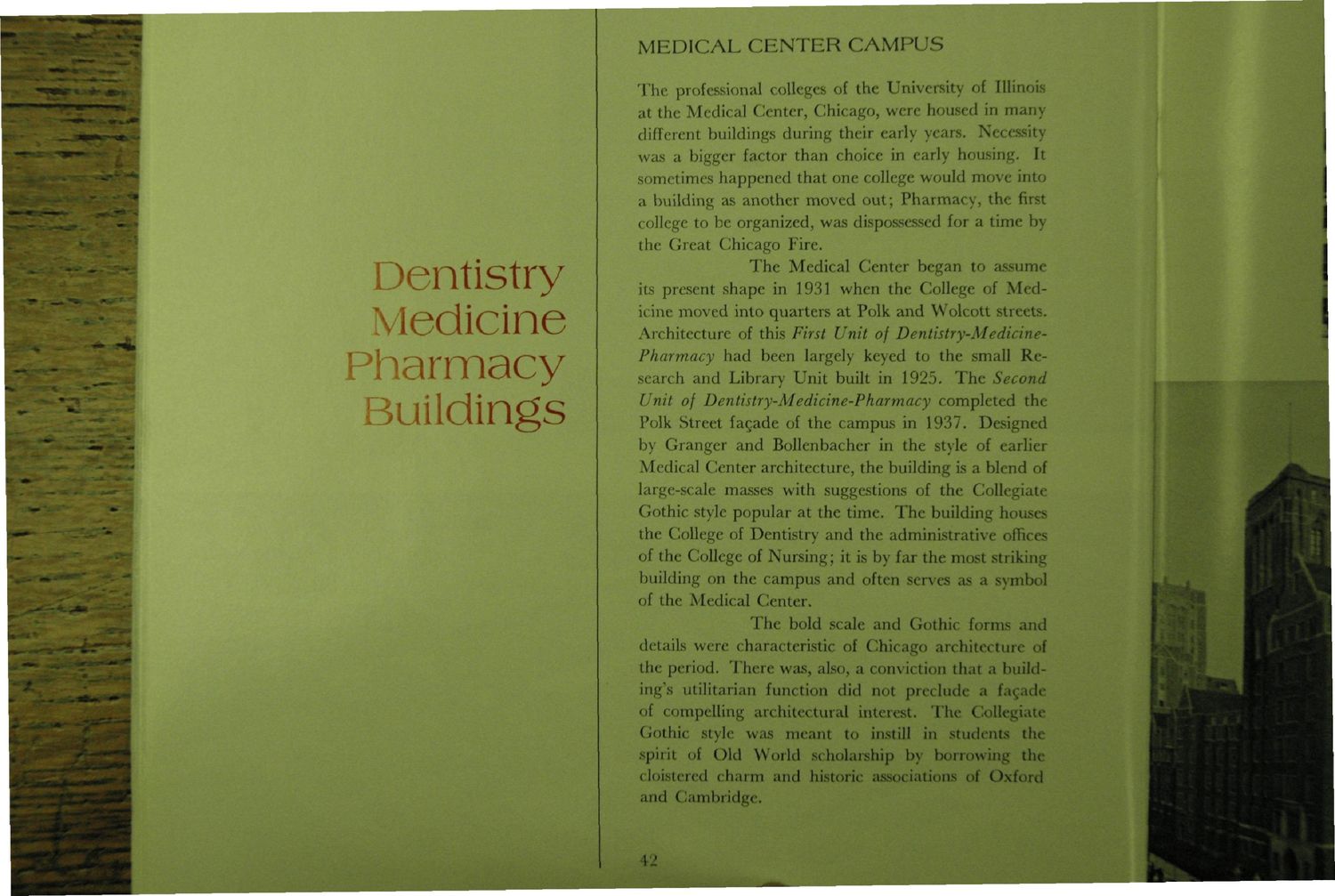| |
| |
Caption: Book - 100 Years of Campus Architecture (Allen Weller)
This is a reduced-resolution page image for fast online browsing.

EXTRACTED TEXT FROM PAGE:
MEDICAL CENTER CAMPUS The professional colleges of the University of Illinois at the Medical Center, Chicago, were housed in many different buildings during their early years. Necessity was a bigger factor than choice in early housing. It sometimes happened that one college would move into a building as another moved out; Pharmacy, the first college to be organized, was dispossessed for a time by the Great Chicago Fire. The Medical Center began to assume its present shape in 1931 when the College of Medicine moved into quarters at Polk and Wolcott streets. Architecture of this First Unit of Dentistry-MedicinePharmacy had been largely keyed to the small Research and Library Unit built in 1925. The Second Unit of Dentistry-Medicine-Pharmacy completed the Polk Street facade of the campus in 1937. Designed by Granger and Bollenbacher in the style of earlier Medical Center architecture, the building is a blend of large-scale masses with suggestions of the Collegiate Gothic style popular at the time. The building houses the College of Dentistry and the administrative offices of the College of Nursing; it is by far the most striking building on the campus and often serves as a symbol of the Medical Center. The bold scale and Gothic forms and details were characteristic of Chicago architecture of the period. There was, also, a conviction that a building's utilitarian function did not preclude a fagade of compelling architectural interest. The Collegiate Gothic style was meant to instill in students the spirit of Old World scholarship by borrowing the cloistered charm and historic associations of Oxford and Cambridge. Dentistry Medicine Pharmacy Buildings \
| |